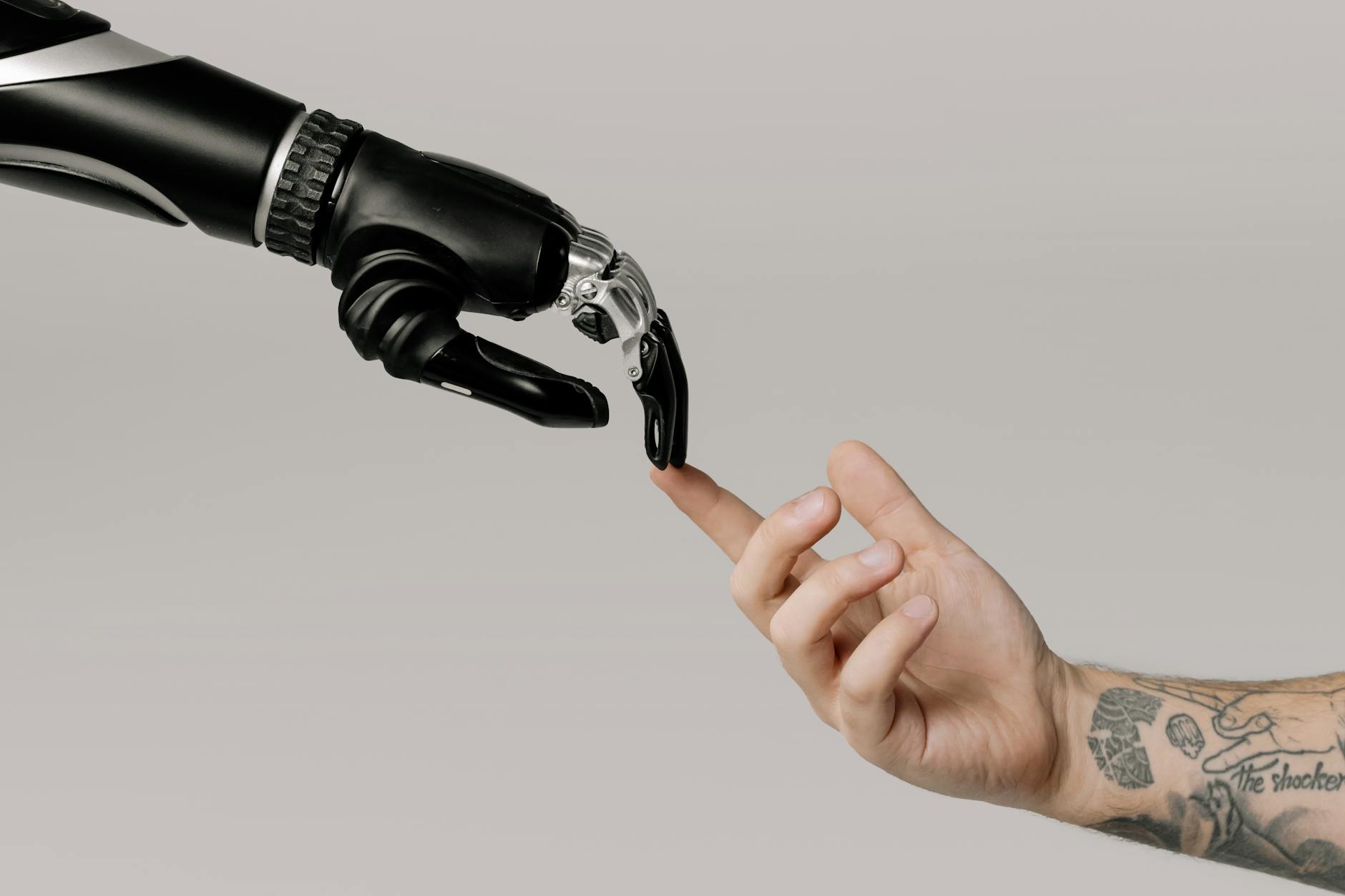
Research areas play a vital role in driving innovation and progress across diverse fields. Identifying the top research areas is essential for researchers, academicians, and industry professionals alike. This article iLovePhD aims to shed light on the most prominent top 10 research areas in different domains and highlight the significance of each area.
By delving into the latest advancements and breakthroughs, readers will gain a comprehensive understanding of the cutting-edge frontiers in these fields.
Discover groundbreaking advancements in AI, robotics, medicine, sustainability & more. Explore how these top 10 research areas will shape the future.
Unveiling the Top 10 Research Areas of 2024!
1. Advancements in Artificial Intelligence (AI)

Advancements in Artificial Intelligence (AI) The field of AI is rapidly evolving, encompassing various subfields that fuel innovation and automation. Machine learning research focuses on developing algorithms that enable machines to learn from data and make predictions.
Deep learning research delves into neural networks and their applications in complex pattern recognition. Natural language processing research explores techniques to enhance machines’ understanding and generation of human language.
Example Research Questions
- Explainable AI (XAI): How can we make AI models more transparent and understandable, allowing us to better trust their decision-making processes?
- Generative AI: How can AI be used to generate entirely new forms of creative content, from art and music to writing and scientific discovery?
- Human-AI Collaboration: How can humans and AI work together effectively to achieve better outcomes, leveraging the strengths of both?
- AI for Social Good: How can AI be applied to address global challenges like poverty, hunger, and climate change?
- The Ethics of AI: What are the ethical implications of developing and deploying increasingly powerful AI systems, and how can we ensure they are used responsibly?
2. Emerging Trends in Robotics

Robotics is transforming industries with its applications in automation and intelligent systems. Human-robot interaction research aims to improve the collaboration between humans and robots in shared environments.
Autonomous systems research focuses on developing self-sufficient robots capable of operating independently. Sensor technology research explores advancements in sensors that enable robots to perceive and interact with their environment effectively.
Example Research Questions
- Swarm Robotics: How can large numbers of robots coordinate their actions to achieve complex tasks, inspired by the behavior of social insects?
- Human-Robot Interaction: How can robots be designed to interact with humans in a safe, natural, and intuitive way?
- Microrobotics: How can robots be miniaturized to perform tasks at the micro and nanoscale, with applications in medicine, manufacturing, and scientific research?
- Soft Robotics: How can robots be built from soft, flexible materials, allowing them to interact with the environment in new ways and operate in delicate or confined spaces?
- Bioinspired Robotics: How can robots be designed that mimic the movement and capabilities of biological systems like animals and insects?
3. Medical and Healthcare Research

Breakthroughs in Biomedical Sciences Biomedical research contributes to advancements in healthcare by understanding diseases and developing targeted treatments. Genomics and personalized medicine research aim to tailor medical interventions based on an individual’s genetic makeup.
Drug discovery and development research focuses on identifying new therapeutic agents and optimizing drug delivery systems. Stem cell research and regenerative medicine explore innovative approaches to tissue engineering and organ transplantation.
Example Research Questions
- Personalized Medicine: How can medical treatments be tailored to individual patients based on their unique genetic makeup and other factors?
- Gene Editing: How can CRISPR and other gene editing technologies be used to treat diseases by correcting or modifying genes?
- Telemedicine: How can technology be used to deliver healthcare services remotely, expanding access to care for people in underserved areas?
- Regenerative Medicine: How can stem cells and other technologies be used to regenerate damaged tissues and organs?
- The Microbiome and Health: How does the trillions of microbes that live in our gut and elsewhere in our bodies influence our health and disease?
4. Innovations in Healthcare Technology

Healthcare technology research focuses on improving patient care and streamlining healthcare processes. Telemedicine and remote patient monitoring enable remote healthcare consultations and continuous patient monitoring.
Healthcare informatics and data analytics utilize advanced technologies to extract insights from large healthcare datasets. Medical imaging and diagnostic research aim to enhance imaging techniques for accurate and early disease detection.
Examples
- Artificial Intelligence in Healthcare: How can AI be used to analyze medical images, diagnose diseases, develop treatment plans, and even perform surgery?
- Wearable Health Monitors: How can wearable devices like smartwatches and fitness trackers be used to monitor our health in real tim and prevent disease?
- Virtual Reality (VR) and Augmented Reality (AR) in Healthcare: How can VR and AR be used for medical training, therapy, and patient education?
- 3D Printing in Healthcare: How can 3D printing be used to create custom prosthetics, implants, and even tissues and organs for transplantation?
- Big Data and Analytics in Healthcare: How can big data be used to improve healthcare outcomes by identifying patterns and trends in patient data?
5. Environmental and Sustainability Research

Climate Change and Renewable Energy Research in climate change and renewable energy seeks to address pressing environmental concerns. Sustainable energy systems research focuses on developing clean energy technologies and optimizing energy consumption.
Climate modeling and prediction research aim to understand and forecast climate patterns to mitigate the impacts of climate change. Carbon capture and storage research explores techniques for capturing and storing carbon dioxide to reduce greenhouse gas emissions.
- Renewable Energy Technologies: How can we develop more efficient and cost-effective technologies for capturing solar, wind, and other renewable energy sources?
- Climate Change Mitigation: How can we reduce greenhouse gas emissions and mitigate the effects of climate change?
- Sustainable Materials and Manufacturing: How can we develop new materials and manufacturing processes that are less harmful to the environment?
- Environmental Monitoring and Restoration: How can we use new technologies to better monitor the environment and restore damaged ecosystems?
- The Circular Economy: How can we transition to a circular economy that minimizes waste and maximizes resource efficiency?
6. Conservation Biology and Biodiversity

Conservation research plays a crucial role in preserving ecosystems and protecting biodiversity. Ecosystem preservation and restoration research focuses on rehabilitating damaged habitats and conserving endangered species.
Wildlife conservation research aims to understand animal behavior and develop conservation strategies. Environmental impact assessment research assesses the potential environmental consequences of human activities and proposes mitigation measures.
- Biodiversity Monitoring and Assessment: How can we develop new methods for tracking changes in biodiversity and identifying species at risk?
- Habitat Restoration and Conservation: How can we restore degraded habitats and conserve threatened species and ecosystems?
- Wildlife Disease Ecology: How do diseases spread through wildlife populations, and how can we mitigate their impact?
- Conservation Genomics: How can genetic tools be used to inform conservation strategies and protect endangered species?
- Human-Wildlife Conflict: How can we reduce conflict between humans and wildlife populations?
Also Read: Top Impact Factor Journals in Cell Biology
7. Social Sciences and Humanities Research

Psychology and Cognitive Science Psychological research investigates various aspects of human behavior and cognition. Cognitive psychology research examines mental processes such as perception, attention, and memory.
Social psychology research explores how individuals’ thoughts, feelings, and behaviors are influenced by social factors. Behavioral economics research combines principles from psychology and economics to understand decision-making processes and behaviors related to economic choices.
- The Future of Work: How will automation and other technological changes impact the workforce and the nature of work itself? Future of Work
- Inequality and Social Justice: How can we address issues of social inequality and promote a more just and equitable society? Inequality and Social Justice
- Global Migration and Demographics: How are changing demographics and migration patterns shaping societies around the world?Global Migration and Demographics
- The Rise of Populism and Nationalism: What are the causes and consequences of the rise of populist and nationalist movements?Rise of Populism and Nationalism
- The Impact of Social Media: How is social media changing the way we communicate and interact with each other?
8. Linguistics and Language Studies – Top 10 Research Areas

Linguistics research focuses on the structure, acquisition, and use of language. Language acquisition and processing research investigates how individuals learn and comprehend language.
Sociolinguistics and language variation research explore the social and cultural aspects of language use and how languages evolve. Computational linguistics research combines linguistic theories and computer science to develop algorithms for natural language processing and machine translation.
- Artificial Intelligence and Natural Language Processing (NLP): How can AI be used to understand human language better and develop new applications like machine translation and chatbots? Artificial Intelligence and Natural Language Processing (NLP)
- Language Acquisition and Development: How do children learn language, and what are the factors that influence language development?Language Acquisition and Development
- Language Change and Evolution: How do languages change over time, and what are the forces that drive these changes?Language Change and Evolution
- Endangered Languages and Language Revitalization: How can we document and preserve endangered languages, and how can we revitalize languages that are no longer widely spoken? Endangered Languages and Language Revitalization
- The Neuroscience of Language: How does the brain process language, and what can we learn from brain imaging studies?
9. Business and Economics Research

Emerging Market Trends Business and economics research plays a vital role in understanding market dynamics and identifying emerging trends. E-commerce and digital marketing research explore strategies for online business growth and customer engagement.
Supply chain and logistics research aims to optimize operations and reduce costs in global supply chains. Entrepreneurship and innovation research investigate factors influencing entrepreneurial success and strategies for fostering innovation in organizations.
- The Sharing Economy: How is the sharing economy changing traditional business models, and what are the implications for different industries?
- Fintech and Financial Innovation: How are new technologies like blockchain and artificial intelligence disrupting the financial services industry?
- The Future of Work: How will automation and other technological changes impact businesses and the way they operate?
- The Gig Economy: How is the rise of the gig economy changing the nature of work and the employer-employee relationship?
- Sustainable Business Practices: How can businesses adopt more sustainable practices throughout their operations to reduce their environmental impact?
Also Read: Top 20 Scopus-Indexed Journals in Economics and Finance
10. Financial Markets and Investments – Top 10 Research Areas

Financial research provides insights into market behavior and investment strategies. Asset pricing and risk management research focus on understanding the pricing of financial assets and managing risks effectively.
Behavioral finance research combines psychology and finance to explore the influence of cognitive biases on investment decisions. Financial econometrics research applies statistical methods to analyze financial data and model market dynamics.
- Cryptocurrencies and Blockchain Technology: How will cryptocurrencies and blockchain technology continue to evolve and impact financial markets?
- The Rise of Robo-advisors: How are automated investment platforms (robo-advisors) changing the way people invest?
- Behavioral Finance: How do psychological factors influence investor decision-making, and how can investors make better financial decisions?
- The Impact of Climate Change on Financial Markets: How will climate change and environmental risks impact financial markets and investment strategies
- Impact of Climate Change on Financial Markets
- Financial Regulation and Fintech: How should financial regulations be adapted to keep pace with the rapid innovation in financial technology?
Conclusion
The diverse research areas discussed in this article represent the forefront of innovation and knowledge generation. Interdisciplinary collaboration among researchers from different domains can lead to groundbreaking discoveries and transformative advancements.
Readers are encouraged to explore these research areas further and contribute to the collective quest for knowledge, innovation, and positive change in society. By embracing these top research areas, we pave the way for a brighter and more prosperous future.
